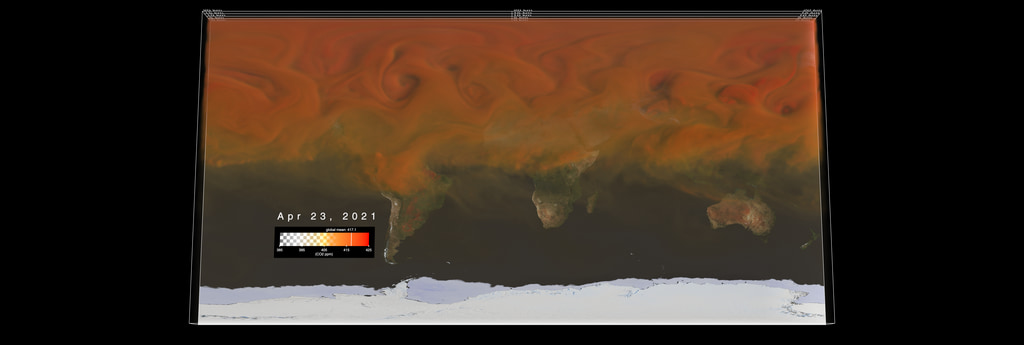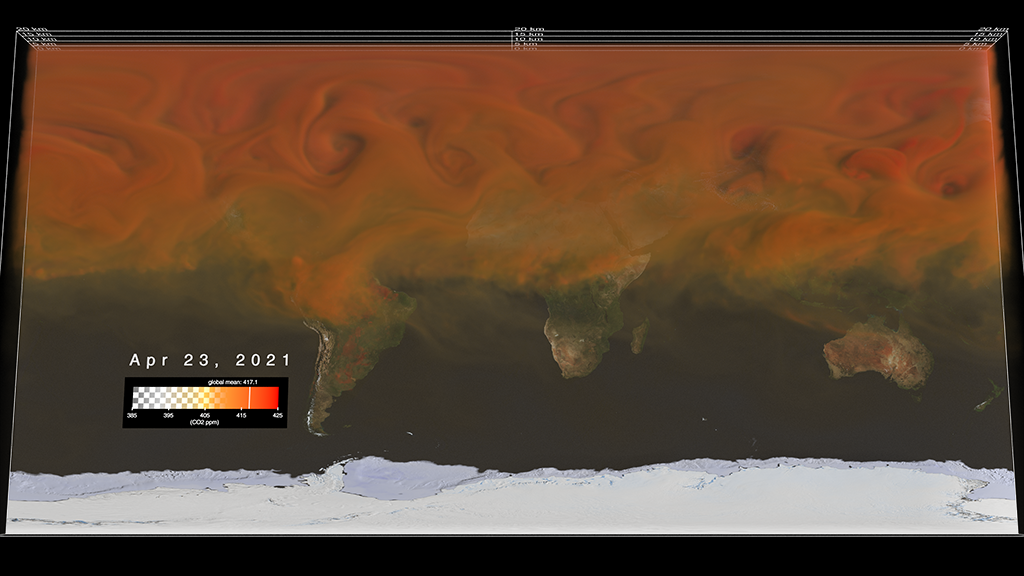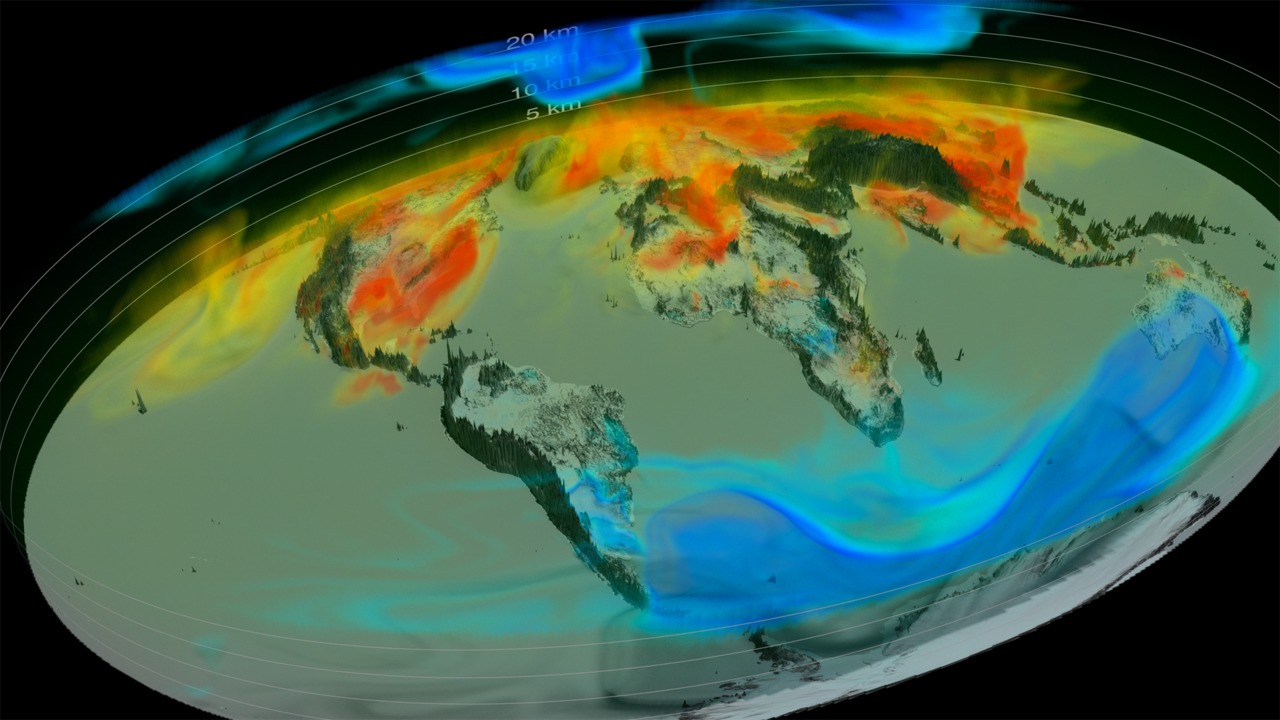Following Carbon Dioxide Through the Atmosphere
Carbon dioxide plays a significant role in trapping heat in Earth's atmosphere. The gas is released from human activities like burning fossil fuels, and the concentration of carbon dioxide moves and changes through the seasons.
Using observations from NASA's Orbiting Carbon Observatory (OCO-2) satellite, scientists developed a model of the behavior of carbon in the atmosphere from September 1, 2014 to August 31, 2015.
Scientists can use models like this one to better understand and predict where concentrations of carbon dioxide could be especially high or low, based on activity on the ground.
The height of Earth’s atmosphere and topography have been vertically exaggerated and appear approximately 40 times higher than normal to show the complexity of the atmospheric flow.
Music credit: Life Cycles by Theo Golding [PRS]
Complete transcript available.
Watch this video on the NASA Goddard YouTube channel.
For More Information
Credits
Please give credit for this item to:
NASA's Goddard Space Flight Center
-
Producers
- Kathryn Mersmann (USRA)
- Matthew R. Radcliff (USRA)
-
Visualizers
- Greg Shirah (NASA/GSFC)
- Horace Mitchell (NASA/GSFC)
-
Scientists
- Lesley Ott (NASA/GSFC)
- Steven Pawson (NASA/GSFC)
- Brad Weir (Morgan State University)
-
Technical support
- Aaron E. Lepsch (ADNET Systems, Inc.)
Release date
This page was originally published on Tuesday, December 13, 2016.
This page was last updated on Wednesday, May 3, 2023 at 1:48 PM EDT.



